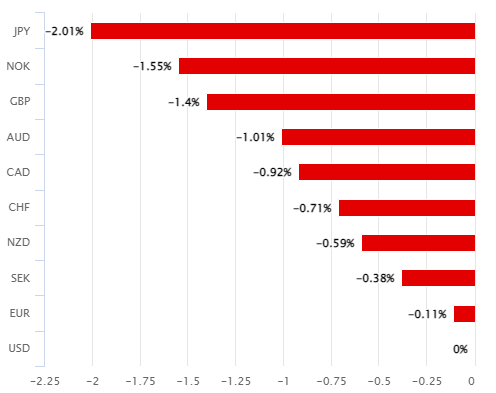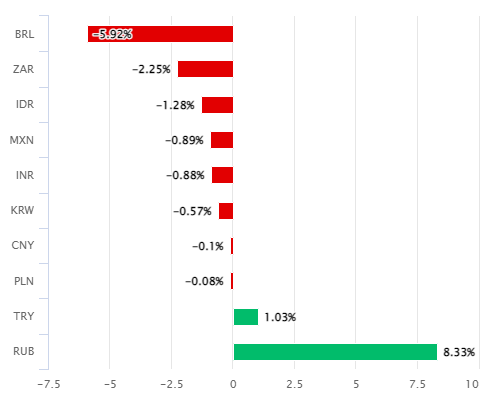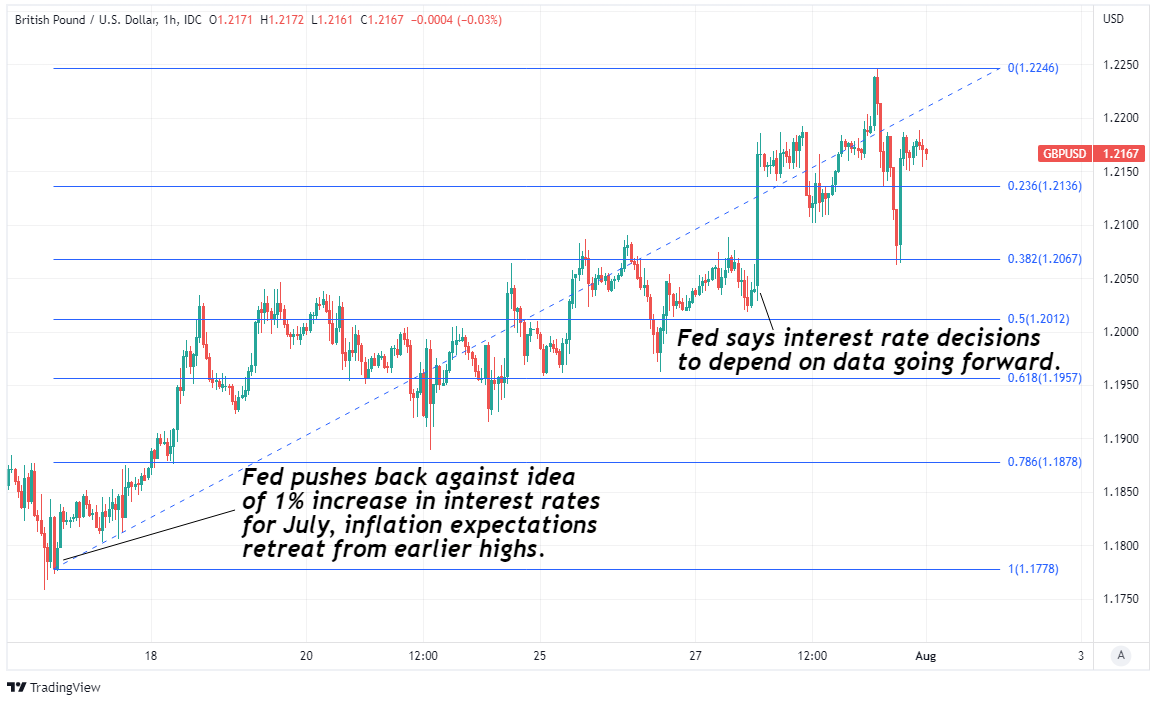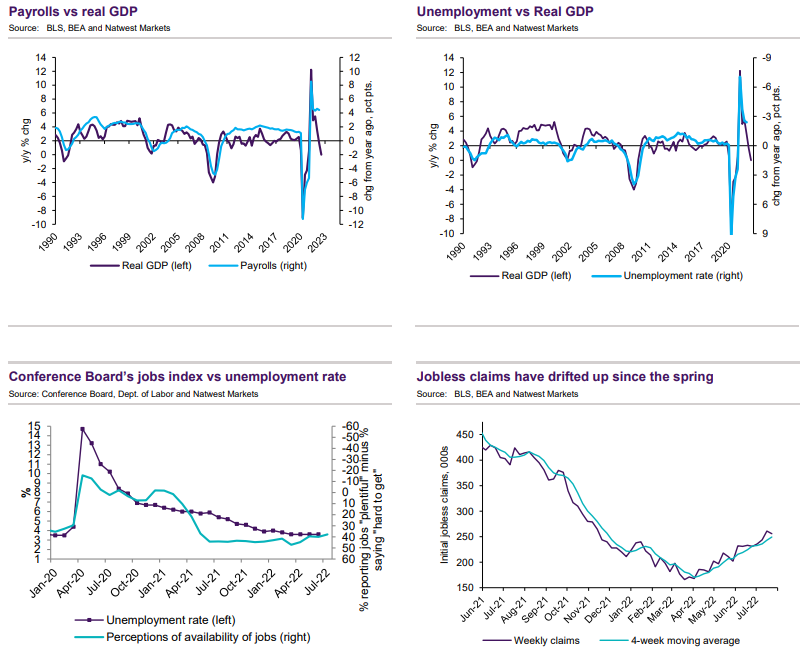GBP/USD Rate Week Ahead Forecast: U.S. Data Minefield
- Written by: James Skinner
-
- GBP/USD enters U.S. economic data minefield
- With BoE Bank Rate risk looming over Sterling
- ISM surveys, payrolls & Fed speak all in focus
- Technical supports at 1.2136, 1.2067 & 1.2012
- Technical resistances around 1.2183 & 1.2282

Image © Adobe Images
The Pound to Dollar exchange rate rallied to one month highs above 1.22 last week but the going could get tougher in the days ahead when it will navigate a minefield of U.S. economic data risks just as the shadow of the Bank of England (BoE) looms larger and larger over Sterling.
Dollars were sold again last week and almost across the board, enabling Sterling to partially reverse the heavy incremental losses sustained since the early days of June when U.S. inflation data placed the Federal Reserve (Fed) on course to lift its interest rate by 1.5% in just two months.
Sterling made a strong start last week in a follow-through response to data out late on the prior Friday, which left the Dollar struggling after suggesting that the all-important U.S. services sector contracted in July, but later climbed notably further following last Wednesday’s Fed decision.
“As we flagged last week, the FOMC made an important policy change by modifying its policy guidance and broadening the criteria for slowing the pace of future rate hikes to more explicitly include the activity outlook,” says Michael Cahill, a G10 FX strategist at Goldman Sachs.
“The market correctly assessed this as a dovish outcome under the current circumstances, in our view. But the decision has to be viewed in conjunction with the latest wage and inflation data, which will make it difficult for the market to push too hard on the dovish narrative,” Cahill also said on Friday.
Above: Dollar relative to G20 currencies last week. Click each image for closer inspection. Source: Pound Sterling Live.
The Pound to Dollar rate rallied more than 160 points to recover the 1.21 handle and approach 1.22 after the Fed delivered a second consecutive 0.75% increase in its interest rate, to 2.5% but also confirmed that the size of future increases will be contingent on forthcoming economic data releases.
It climbed further when falling inventories at general retailers and motor vehicle dealers conspired with declines in business investment and government spending to lead the U.S. economy into a second consecutive quarter of negative growth and a so-called technical recession.
But the rally stalled briefly on Friday after the Core PCE Price Index and Employment Cost Index showed inflation and wage costs rose further than was envisaged by consensus during July in outcomes that could have implications for Fed policy in September.
“Friday was a reminder that there’s a long way to go before US inflation can be considered beaten. Rate and equity volatility looks set to continue as the battle continues between those who believe that inflation (particularly in goods) is about to evaporate (albeit possibly along with growth momentum), and those who think domestic inflation pressures are looking thoroughly embedded,” says Sharon Zollner, chief economist at ANZ.
Above: Pound to Dollar rate shown at hourly intervals with Fibonacci retracements of July 14 rally indicating possible areas of short-term technical support for Sterling. Click image for closer inspection.
It remains to be seen if the Pound to Dollar recovery can extend further through the early days of the week ahead but what is for certain is that an action-packed U.S. economic calendar and Thursday’s Bank of England interest rate decision both have the capacity to prompt a setback for Sterling.
“We think the BoE will conclude that inflationary pressures are now more persistent and will raise interest rates by 50bps, from 1.25% to 1.75%. We think interest rates will be raised to a peak of 3.00% in the first half of next year,” says Nicholas Farr, a UK economist at Capital Economics.
There is high uncertainty over whether the BoE will lift its Bank Rate by a typical quarter percentage point - to 1.5% - or if it will opt for one of the larger half percentage point increases that have recently been popular elsewhere in the world and would take the benchmark to 1.75%.
Some analysts and economists expect the BoE to stick with the usual 0.25% increment including those at HSBC who tipped Sterling as a sell last week for exactly this reason, although the Pound-Dollar rate will face plenty of other risks before and after Thursday’s decision.
 Above: Pound to Dollar rate shown at daily intervals with Fibonacci retracements of June and late February declines indicating possible areas of short-term technical resistance for Sterling. Click image for closer inspection.
Above: Pound to Dollar rate shown at daily intervals with Fibonacci retracements of June and late February declines indicating possible areas of short-term technical resistance for Sterling. Click image for closer inspection.
“The upcoming week’s economic calendar features the regular start-of-the-month package of ISM and employment reports, along with auto sales and a handful of other indicators. Despite a slowing economy, this week’s data are likely to show some resilience at the start of Q3,” says Kevin Cummins, chief U.S. economist at Natwest Markets.
There are at least two members of the Fed’s rate setting committee who’re scheduled to speak publicly this week and remarks from either could have Dollar-positive implications for the markets assumptions about interest rates from September onward, which were revised down last week.
But Monday and Wednesday’s Institute for Supply Management (ISM) PMI surveys also pose risks in both directions for GBP/USD - with markets likely looking to see if they confirm the grim message of the S&P Global surveys - and so too does this Friday’s non-farm payrolls report for July.
“We look for a job gain of 270,000 (private 255,000) in July, which would be only slightly softer than the recent trend. If the path of job advances looks close to our forecast, we would take such a result as a signal that the economy is still muddling through, rather than having already tumbled into recession,” Natwest Markets’ Cummins wrote in a Friday look at the week ahead.
Above: Key U.S. economic indicators. Source: Natwest Markets. Click image for closer inspection.















